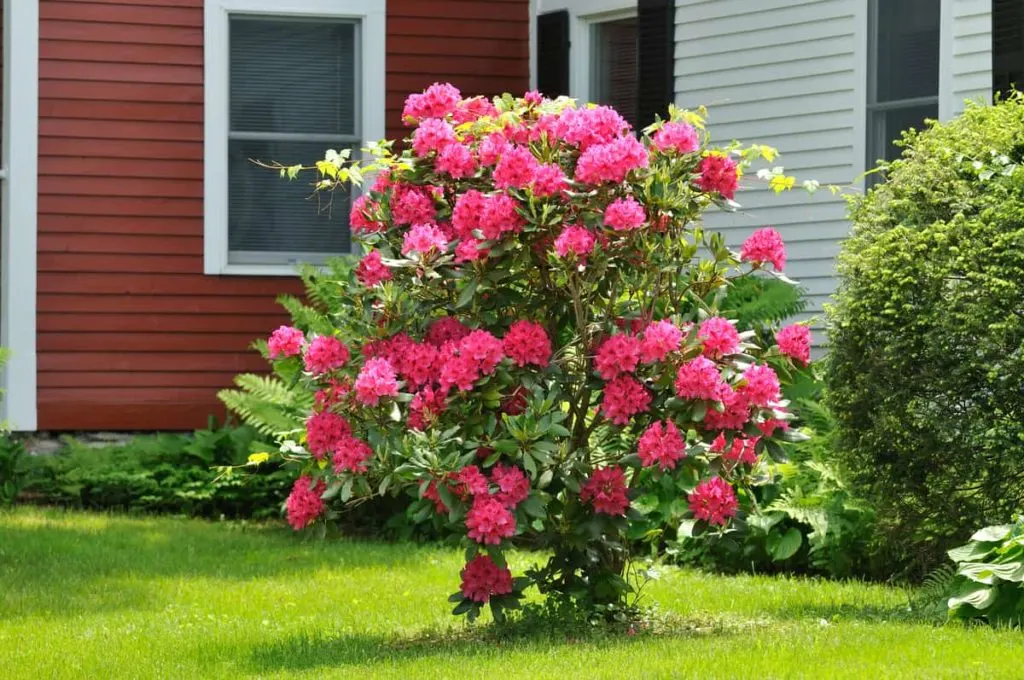
Are you looking for ways to make your landscape stand out in your neighborhood? An amazing way to have your landscape really say something interesting and unique about you is by planting a fantastic specimen plant.
What is a specimen plant, you ask?
A specimen plant draws in attention. It is a conversation piece. It stands out amongst structures and plants.
How does it do this?
The specimen plant has something extra special to offer. It may be rare. Sometimes, it has a fantastical or bizarre form, like a tree that grows sideways. Or a giant cactus that looks like a person walking.
Other times, a specimen plant may have an interesting flower or it may bloom at an extraordinary time of year. Essentially, a specimen plant is a living art piece.
Grow Living Art
Traditionally, a specimen plant is a beautiful, generally large, tree grown in the front yard. Often the specimen plant has a spectacular show, such as the gorgeous blooms of spring-blooming crabapple.
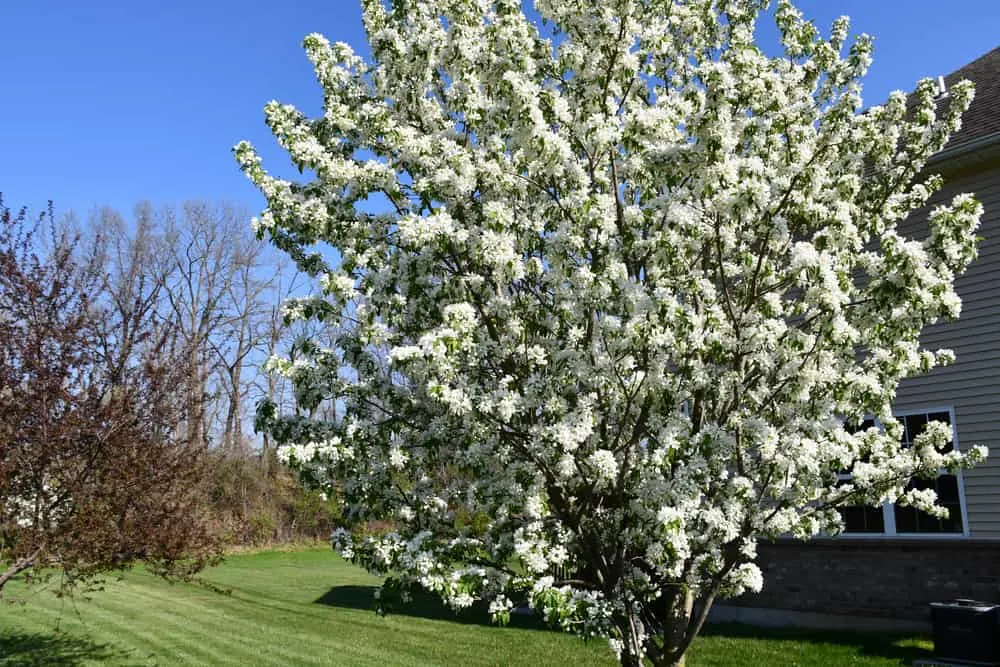
Or, the specimen plant might have an interesting form, such as a cut-leaf weeping birch or weeping willow. On the other hand, the specimen plant might have gorgeous, colorful foliage, like a crimson king maple.
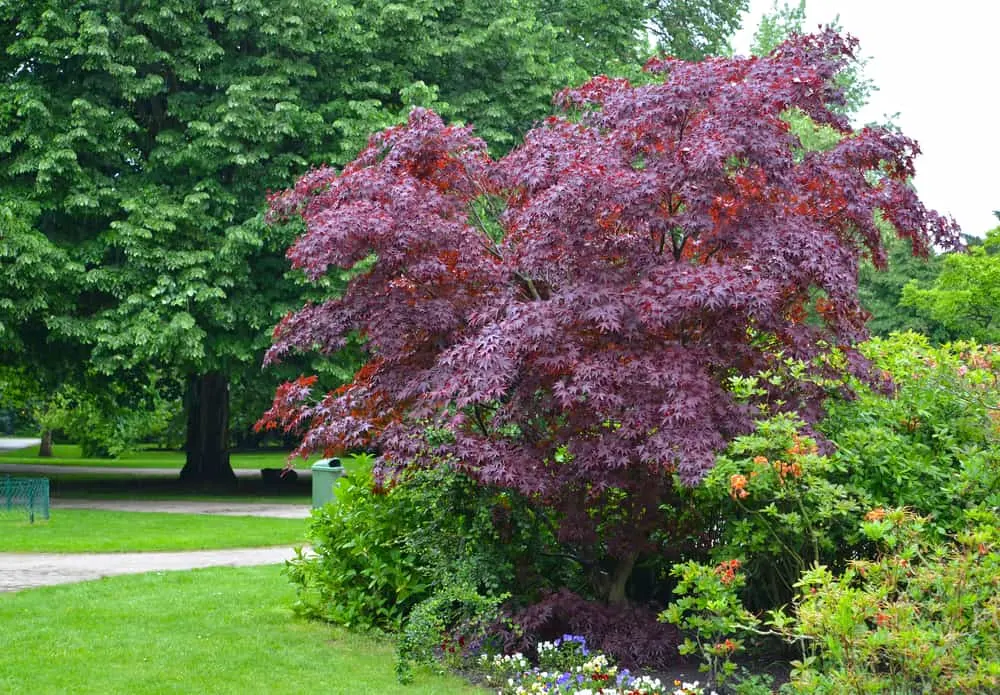
The traditional placement of a specimen plant is in isolation in the lawn. This creates a focal point in the landscape. It also aids to draw attention to the beauty or uniqueness of the specimen plant.
Create a Spectacle in Your Landscape
Specimen plants no longer belong just in the middle of the front lawn. An example may be to espalier that spring-blooming crabapple against a wall or fence to create a spectacle of shape, form, and blossom.
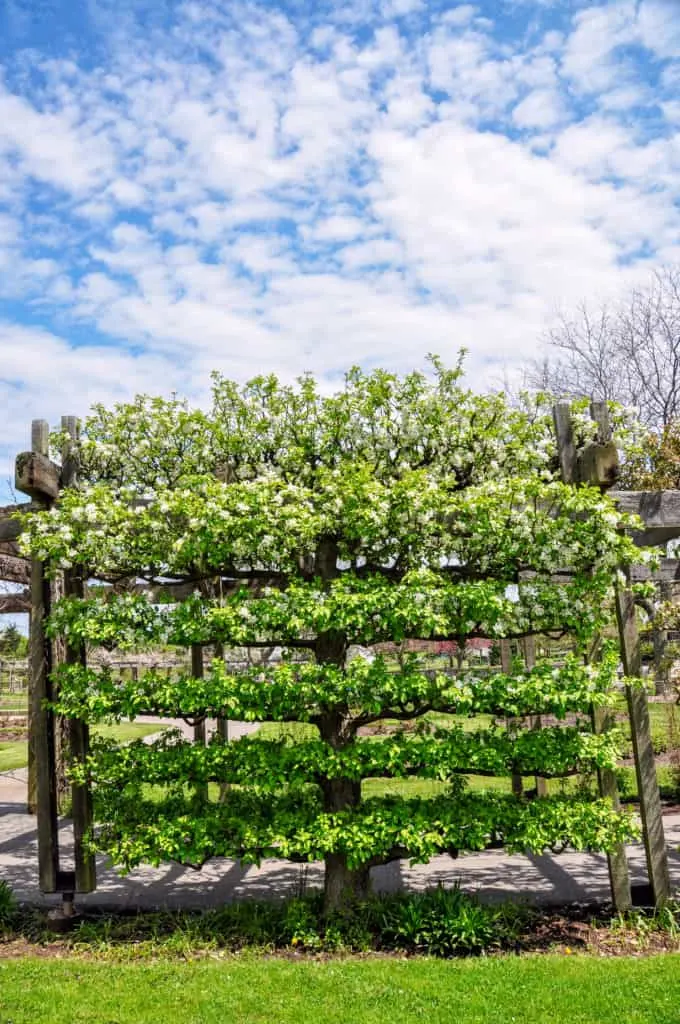
A specimen plant may also be used to enhance a lovely plant grown in repetition. For example, grow a lovely lavender hedge intermingled with topiary trees.
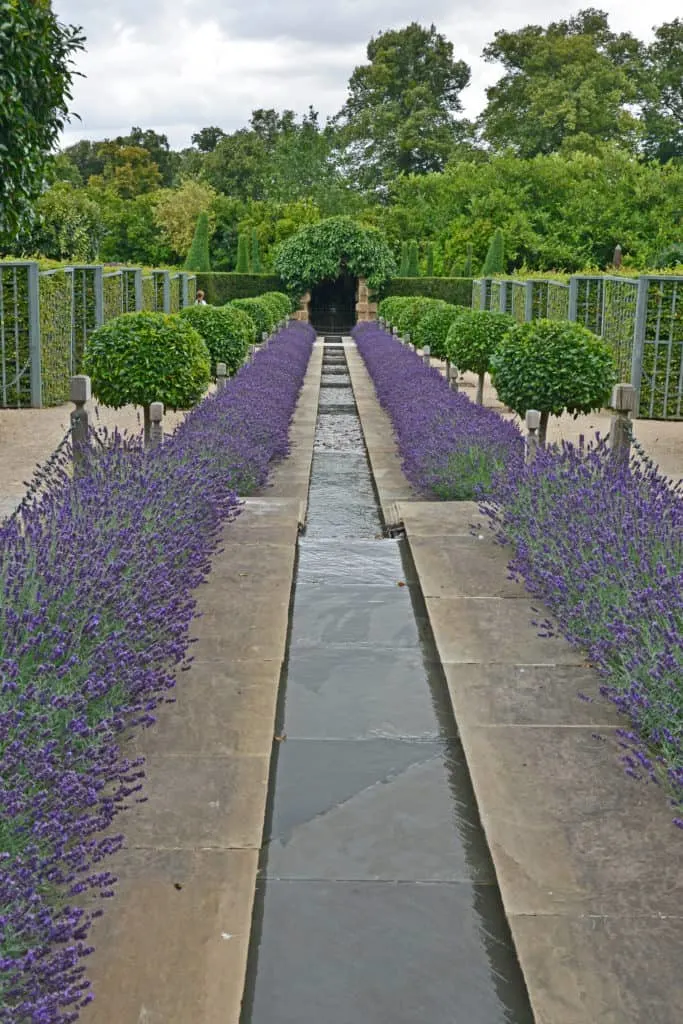
Multidimensional and Multi-seasonal
When planning a specimen in the garden, it may be important to think about what the specimen will look like during other seasons.
The crabapple espalier may look exceptional as the uniquely formed branches spread across the wall or fence, even when it is not in bloom, leaf, or fruit.
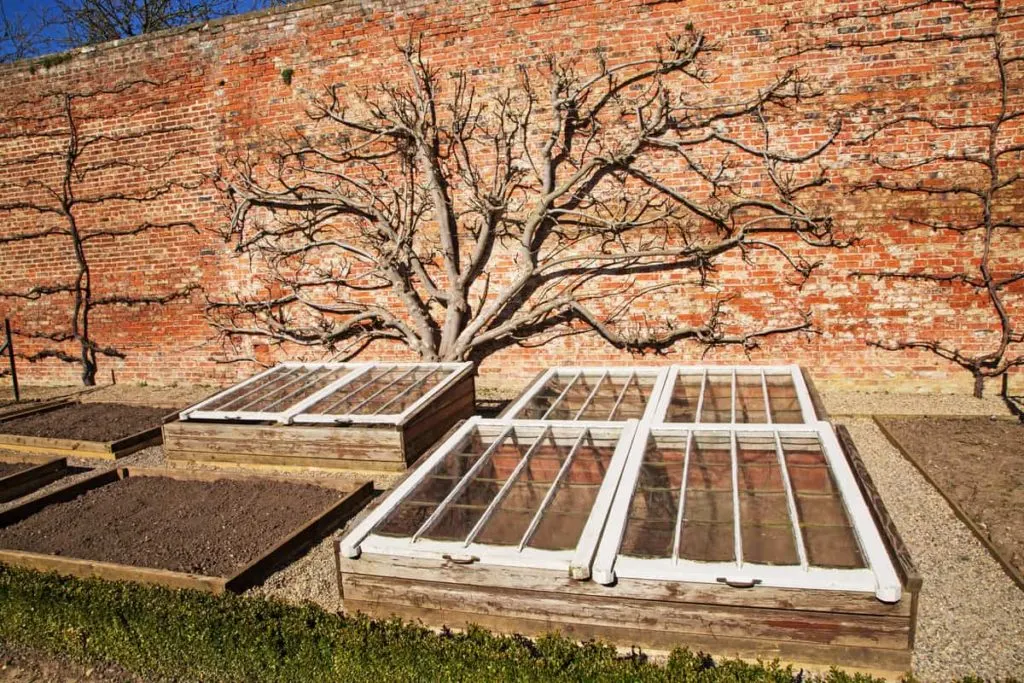
Another example might be a bizarrely shaped sideways tree, incredible on its own, but even more spectacular with a dusting of frost or an inch or two of snow.
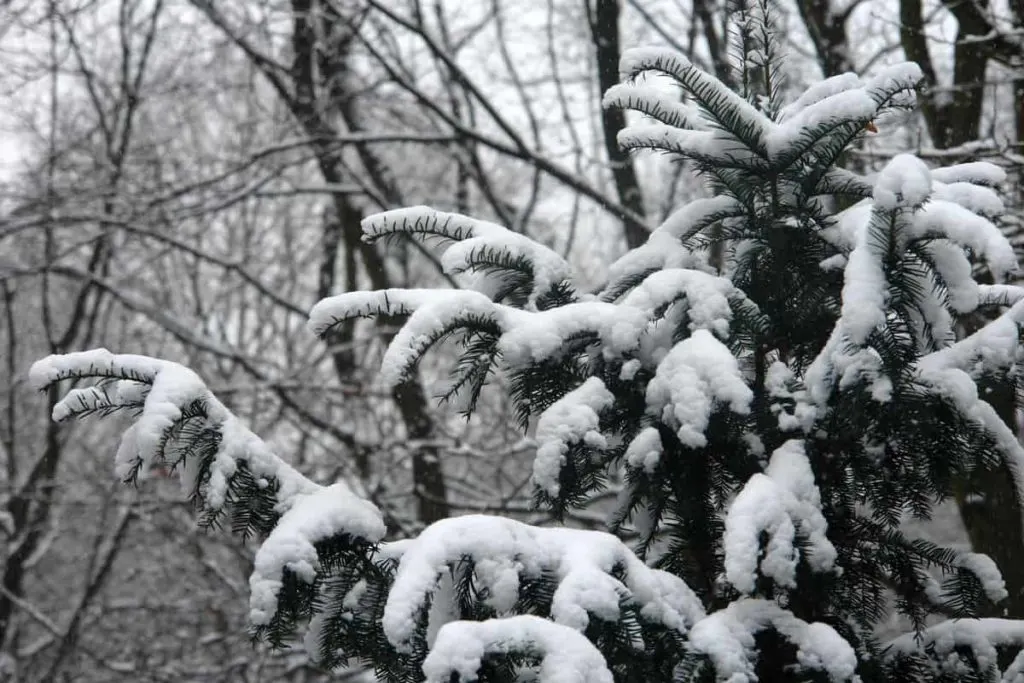
Naturally Exceptional
Not all specimen plants need lots of upkeep and work. Some are exceptional all on their own! Choosing plants with unique or interesting forms is one way to celebrate and show off a specimen plant. Many plants have style all their own with one-of-a-kind growth habits.
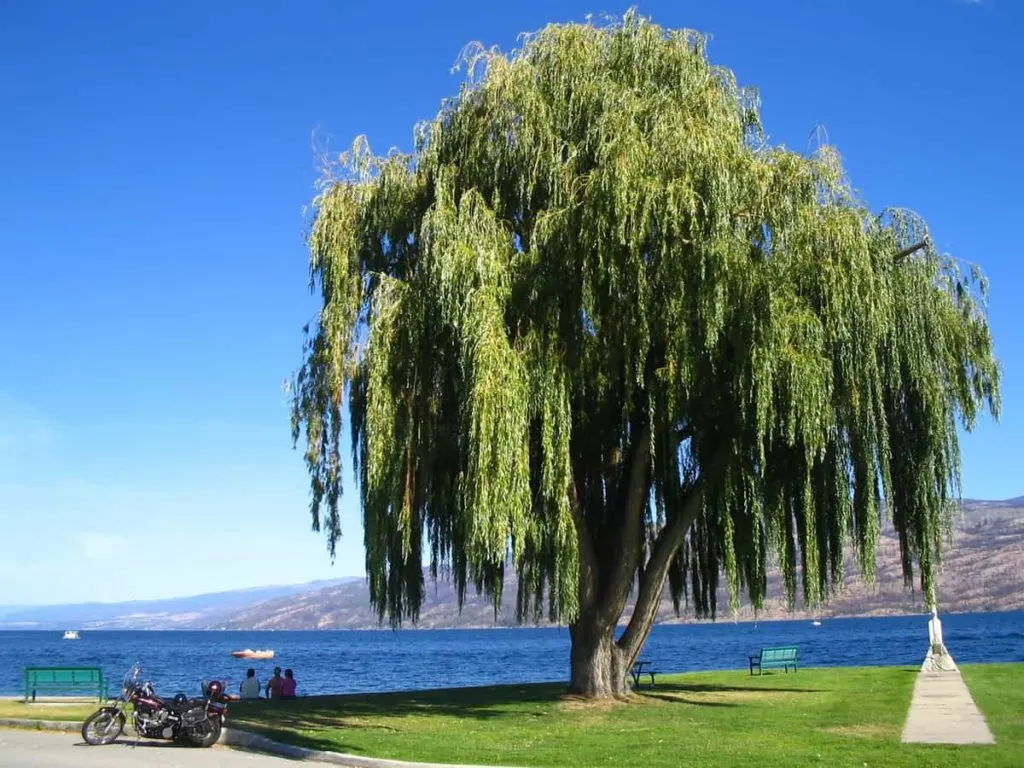
A great example are trees or shrubs with weeping habits. This habit has been bred into the plant. It is often noted in the plant’s name with words like cascading, weeping, or pendula. Many medium-maintenance spectacular specimens can be found. There are even nurseries devoted to these specialized gorgeous plants.
Another example of lower maintenance specimen plant is the memorable and addictive Monkey Puzzle tree. Once this tree appears in your neighborhood, everyone will want to know where it came from!
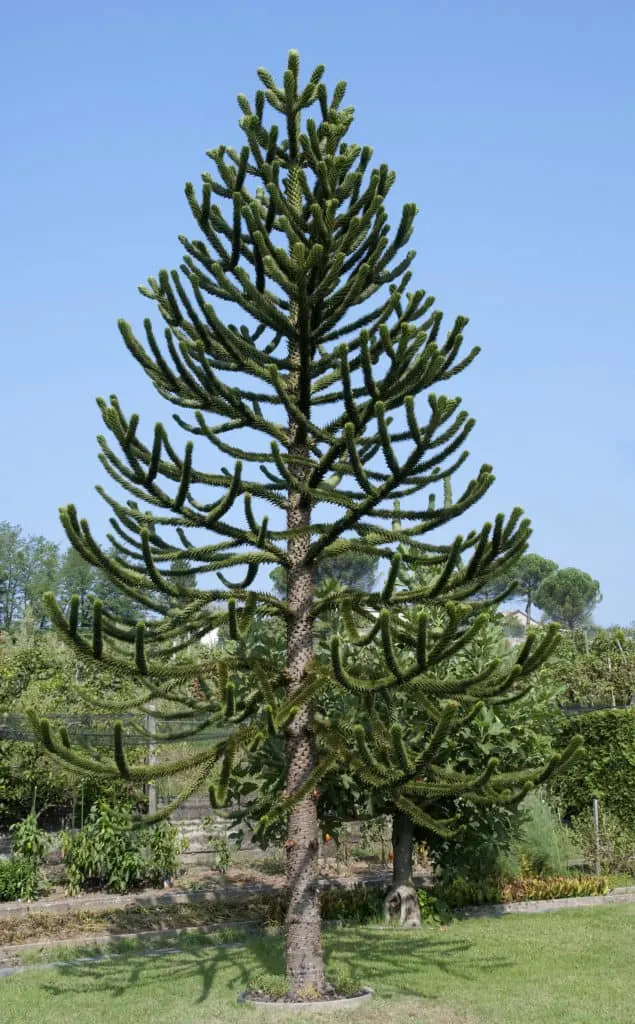
Yet, another adorably dangerous low-maintenance specimen is the Teddy Bear Cholla, best suited to hot and dry climates.
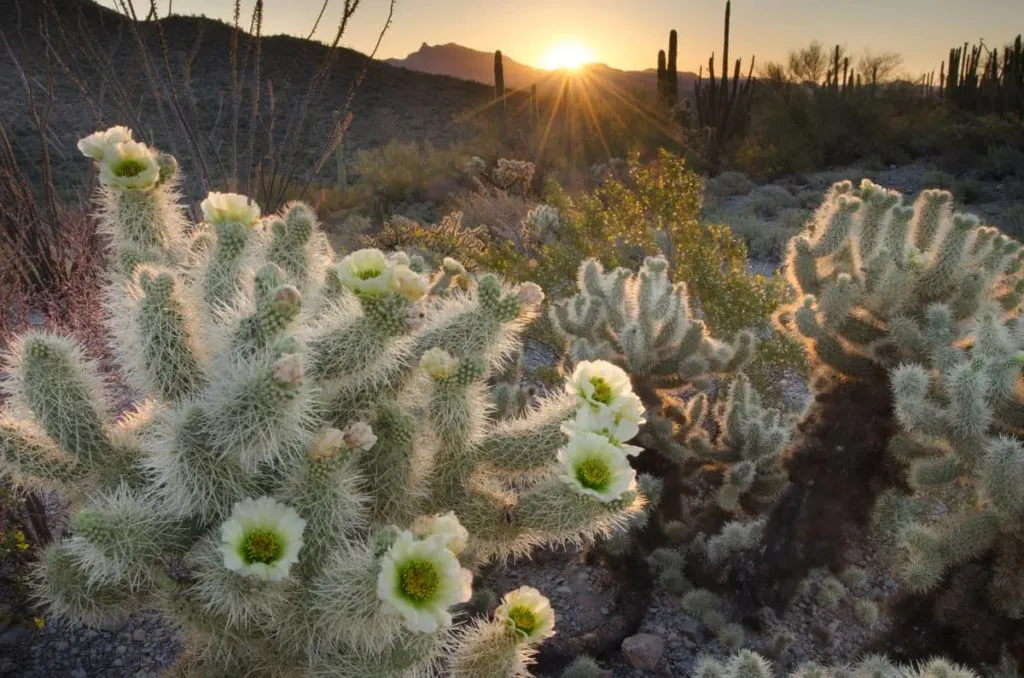
Maintaining Living Art
On the other hand, some remarkably shaped shrubs, trees, or plants may love a lot of touch ups to keep them in style. These include the espalier and topiary trees mentioned above.
Many species of plants lend themselves well to these kinds of treatments. The pom-pom pines might be worth the effort of a spring or early summer shearing to keep their eye-catching branches at their finest. In fact, many kinds of evergreens make wonderful topiaries. They also provide year-round interest!
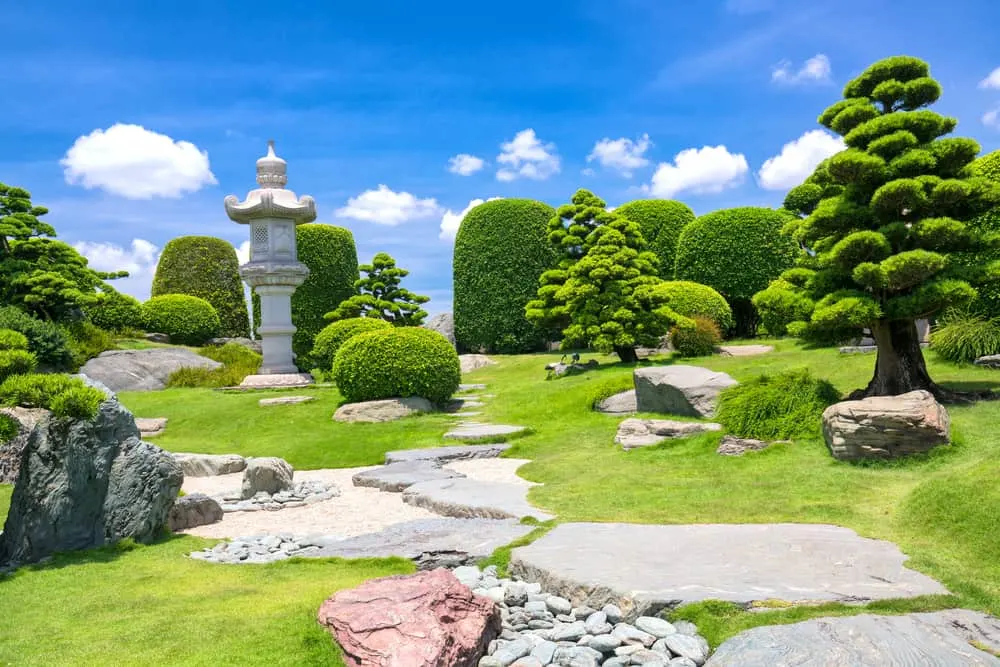
Add Dramatic Flare
Create wonder and amazement in the garden by choosing specimen vines. Vines that readily attach to structures can take on the structure’s outline.
An arbor smothered in a spring and fall blooming clematis makes a stunning and welcoming specimen in the garden.
A deliciously fragrant climbing rose that reaches a second story outdoor patio may enrapture summertime diner guests.
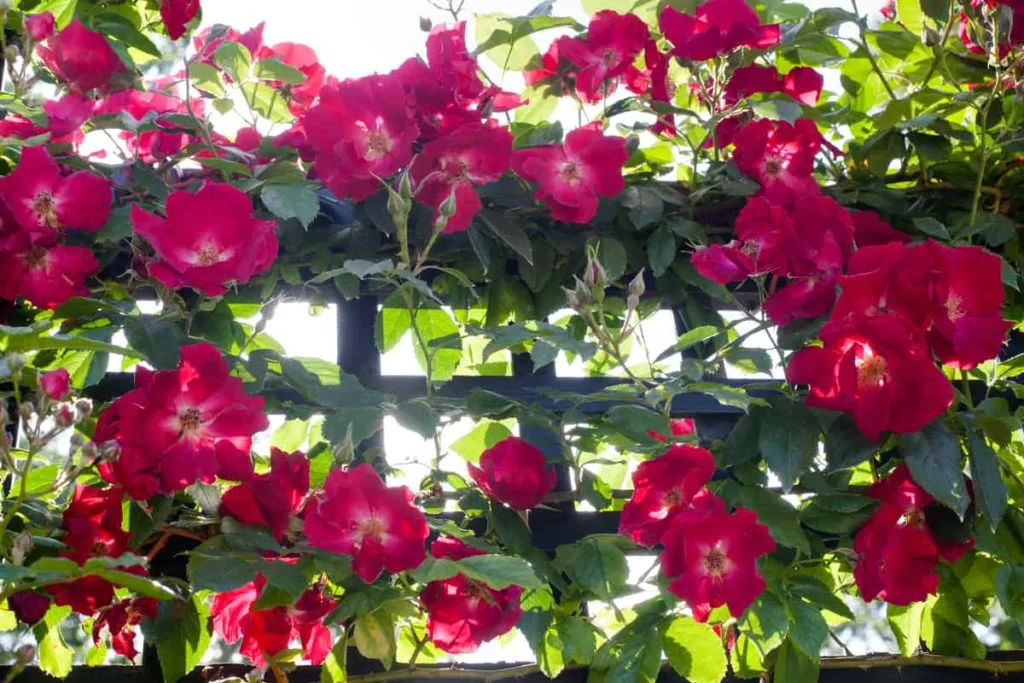
A stand-out specimen could be a wire structure such as a giant elephant standing in the front garden completely entangled in climbing ivy.
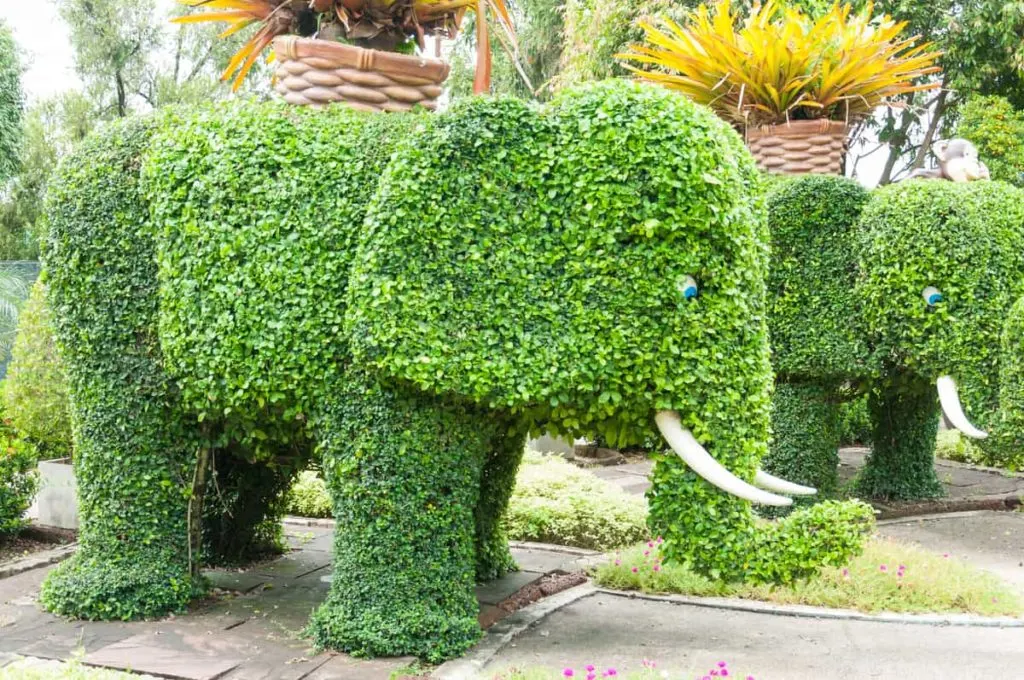
Two Important Questions to Ask to Help You Choose the Best Specimen Plant
1. Where will the specimen plant make the largest impact?
Once you know the where, it is much easier to choose the best specimen plant. Is it full sun or shade? What are the growing conditions and zone of the area?
The potential success of the specimen plant will be much higher if it is well suited to the climate and conditions it will live and be admired in.
2. How much time and effort do you have to devote to this specimen plant?
Are you a striving master gardener who really wants to show off their stuff? A perfectly trimmed ornate boxwood hedge surrounding your flawlessly pruned plant sculptures might be in your wheelhouse.
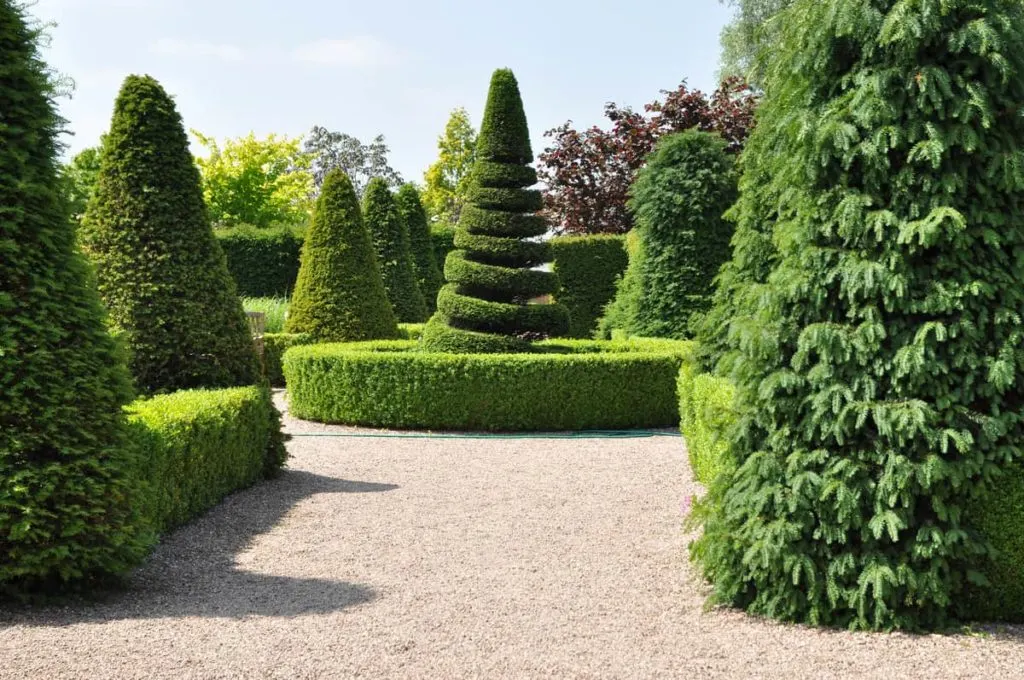
Or perhaps you desire a thoughtfully planted gorgeous brightly colored tree that thrives with just a spring or fall tune up.
On the other hand, a low-maintenance desert loving plant may be just what you need. Similarly, there’s no shame in putting in a stunning landscape feature such as a near zero-maintenance unique feature stone or statue. It will always be well treated and have everything it needs.
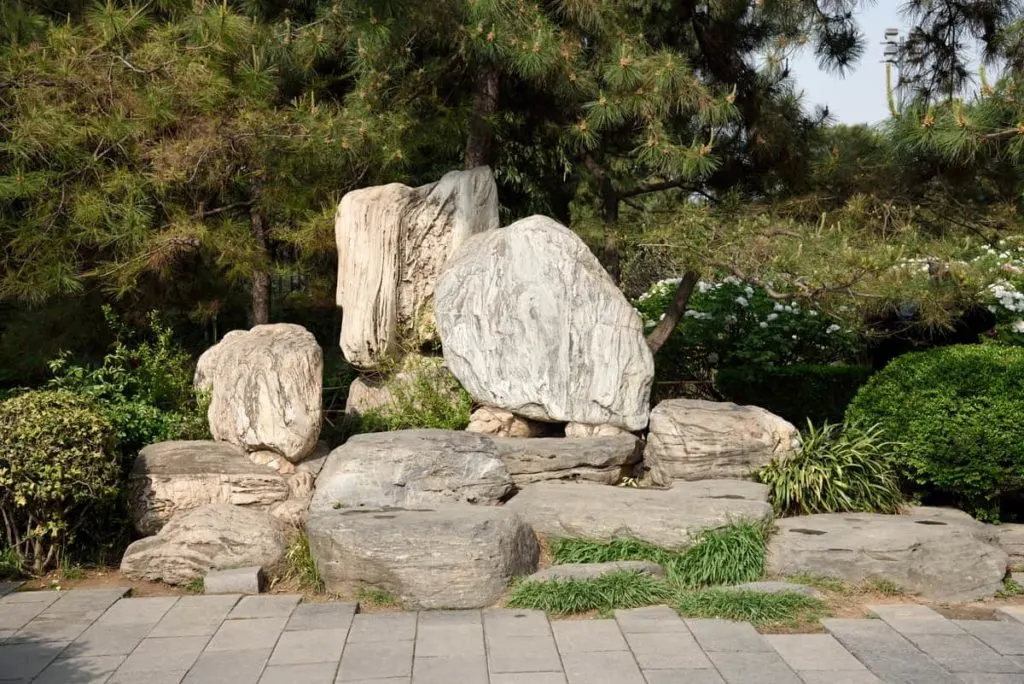
Daring to be Different? Don’t Overdo It!
The exciting world of dramatic plant forms, foliage, and flowers is enticing, believe me! Just be careful not to overdo it. Just like the overdramatic, demanding child, an overdone or crowded landscape can become too busy. Too many focal points are difficult to hold the desired attention.
12 Best Specimen Plants To Bring Focus & Attention
Trees With Weeping Form
1. Weeping Larch (Larix decidua ‘pendula’)
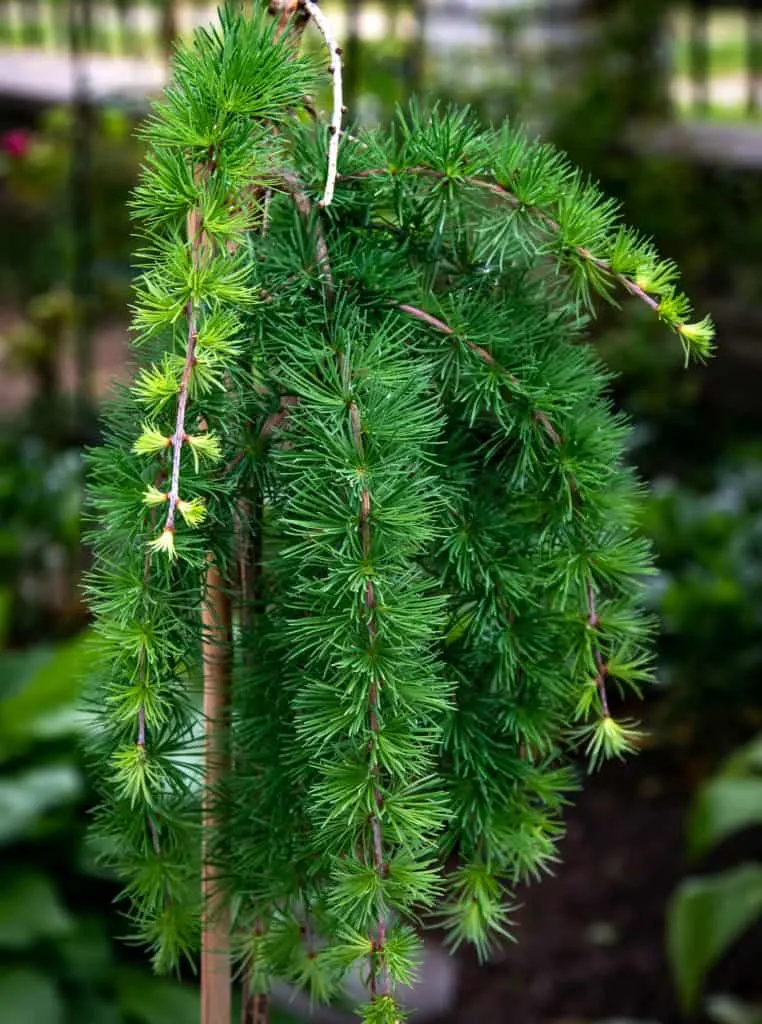
Weeping larch makes a wonderful focal point. It also provided year-round interest with bright golden foliage in fall, unique form in winter, and bright green feathery growth spring and summer.
2. Weeping Norway Spruce (Picea abies ‘pendula’)
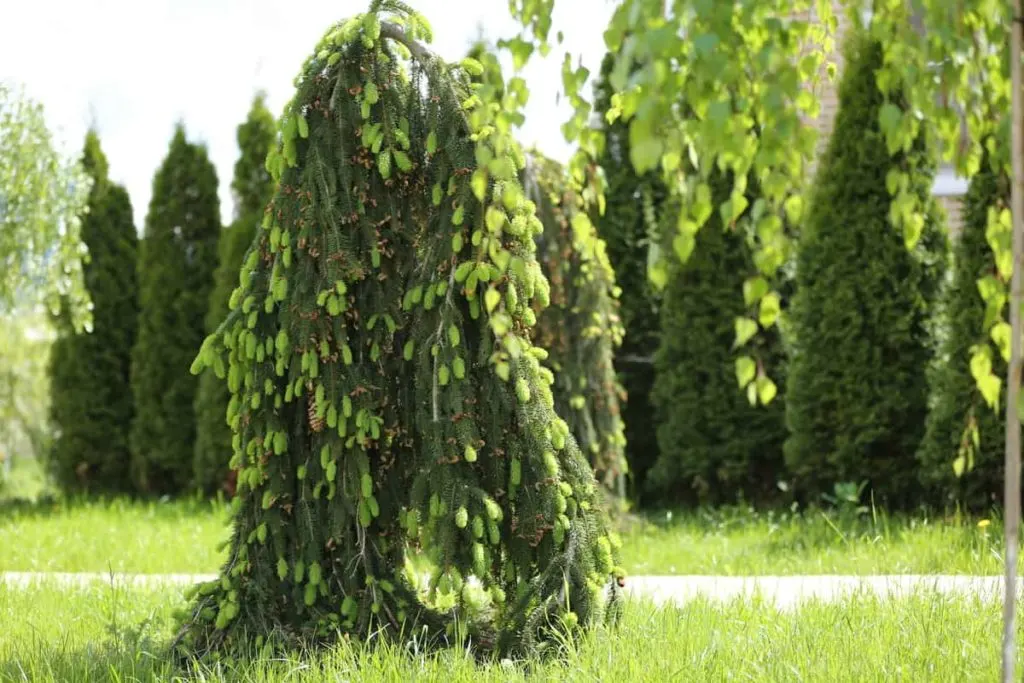
The grandaddy of weeping evergreens, weeping Norway spruce is always a conversation piece.
3. Weeping Birch (Betula pendula)
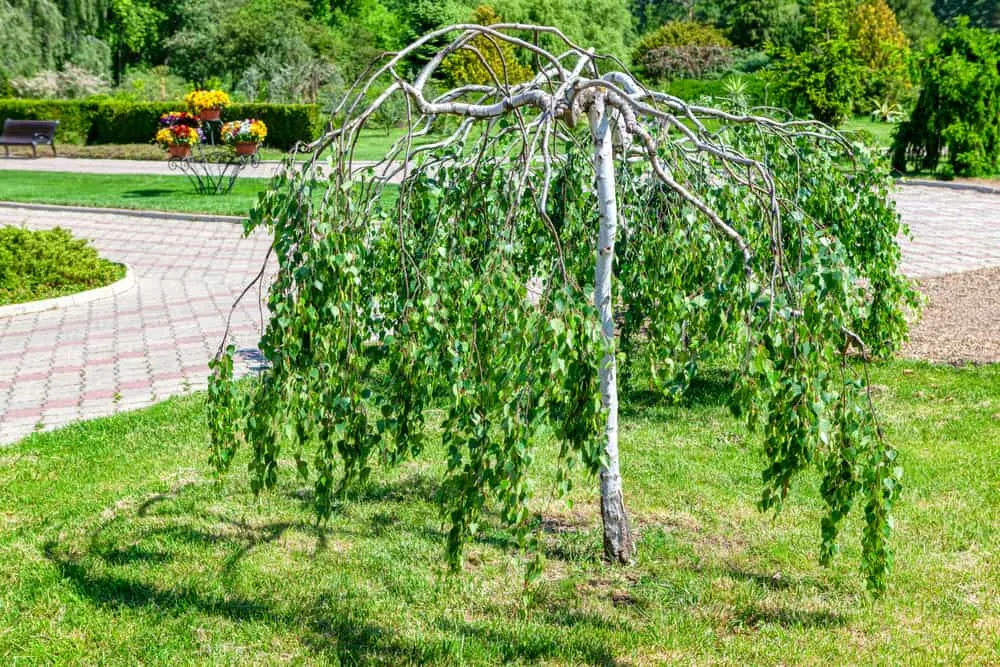
The whimsical weeping birch stands out, even amongst the most flamboyant of plants. Fire yellow in fall, bright green spring and summer, with papery white bark that holds its own for winter interest.
Outstanding Unique Specimen Trees and Shrubs
4. Smoke Bush (Cotinus coggygria)
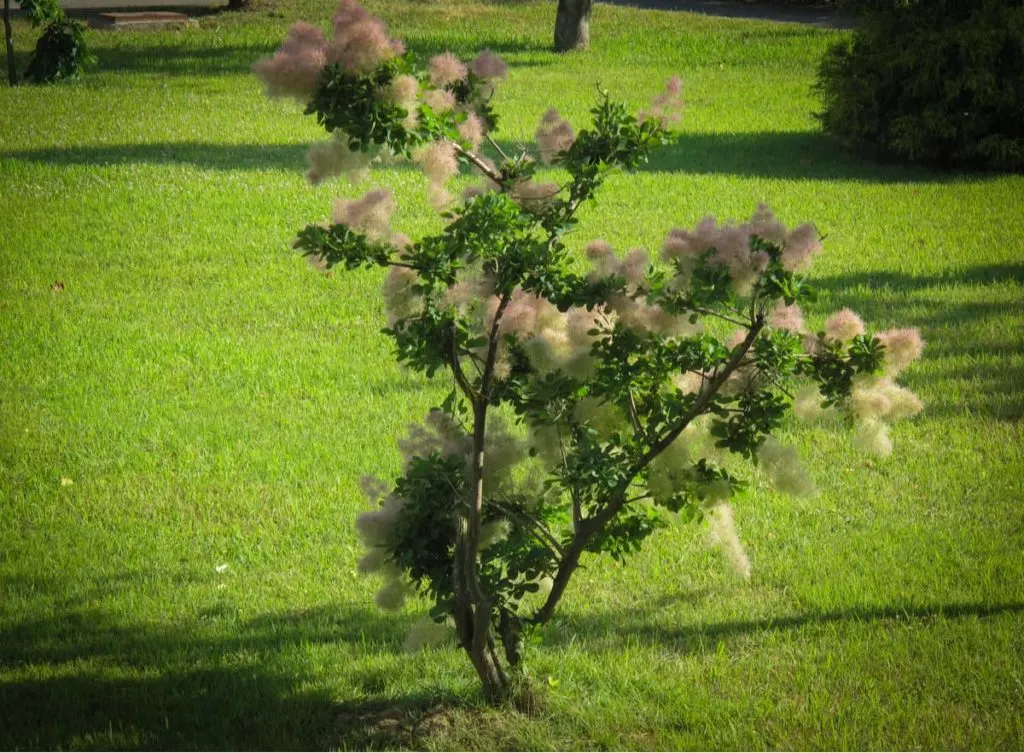
Outstanding purple, pink smokey plumes draw the eye and capture attention.
5. Magnolia (Magnolia sp.)
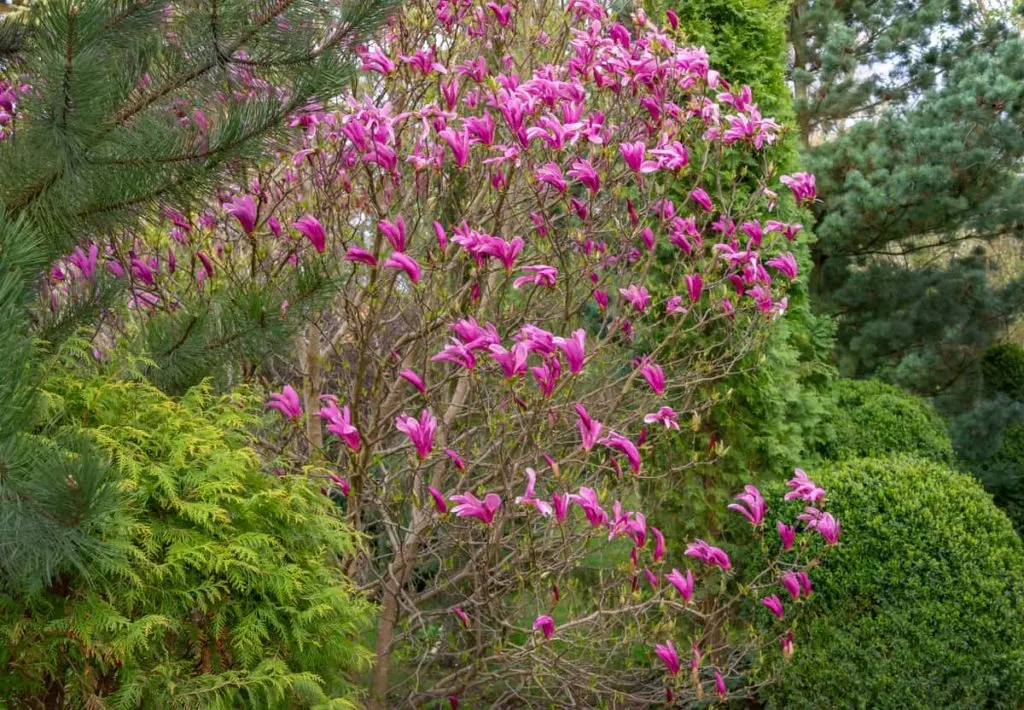
The definition of distinctive, Magnolias stand out in any crowd! An obsession-inducing genus of plants. Do you have an area in your garden worthy of this magnificent specimen plant?
6. Burning Bush (Euonymus alatus)
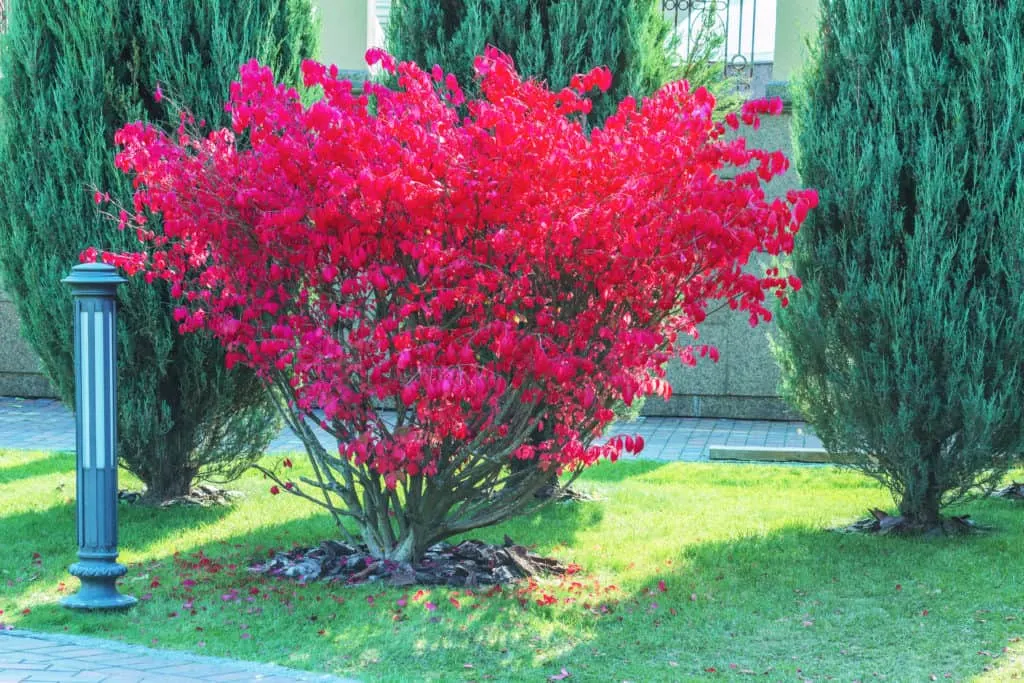
This gorgeous specimen plant makes an entire spectacle of itself as a celebration at the end of summer. If fall is your favorite time of year, burning bush certainly gives you something to look forward to. There is simply no comparison to its bright crimson foliage and ease of care.
Trees and Shrubs Perfect for Sculpting and Shaping
7. Boxwood (Buxus sp.)
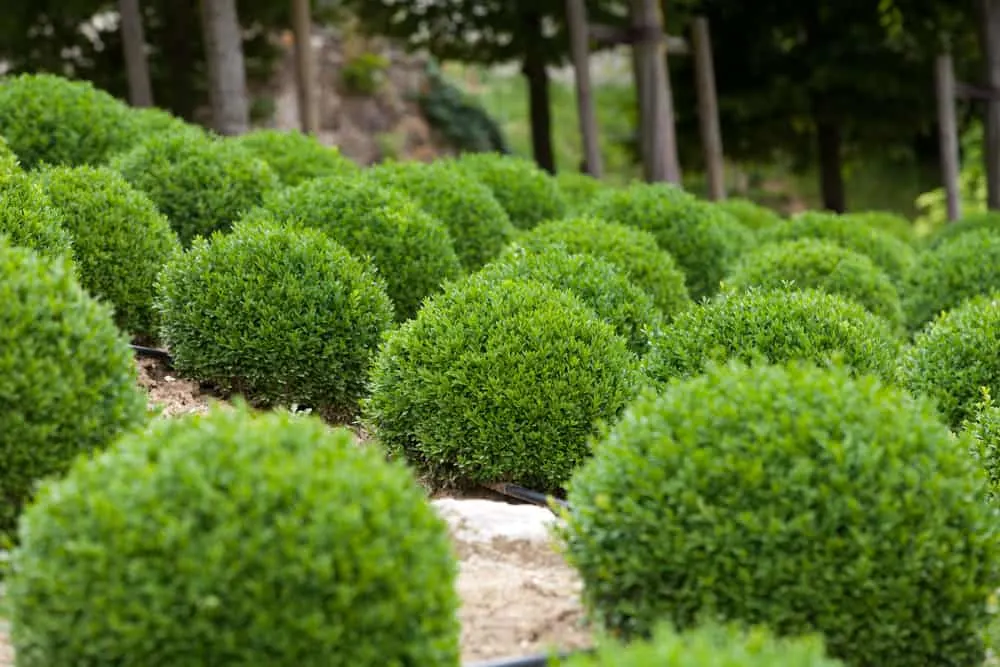
There is entirely no limit to the creations you can sculpt with this famously formal plant. From unique shapes to bizarre manifestations of your creative muse, boxwood may be the specimen plant that will elevate your garden to the next level.
8. Arborvitae (Thuja sp.)
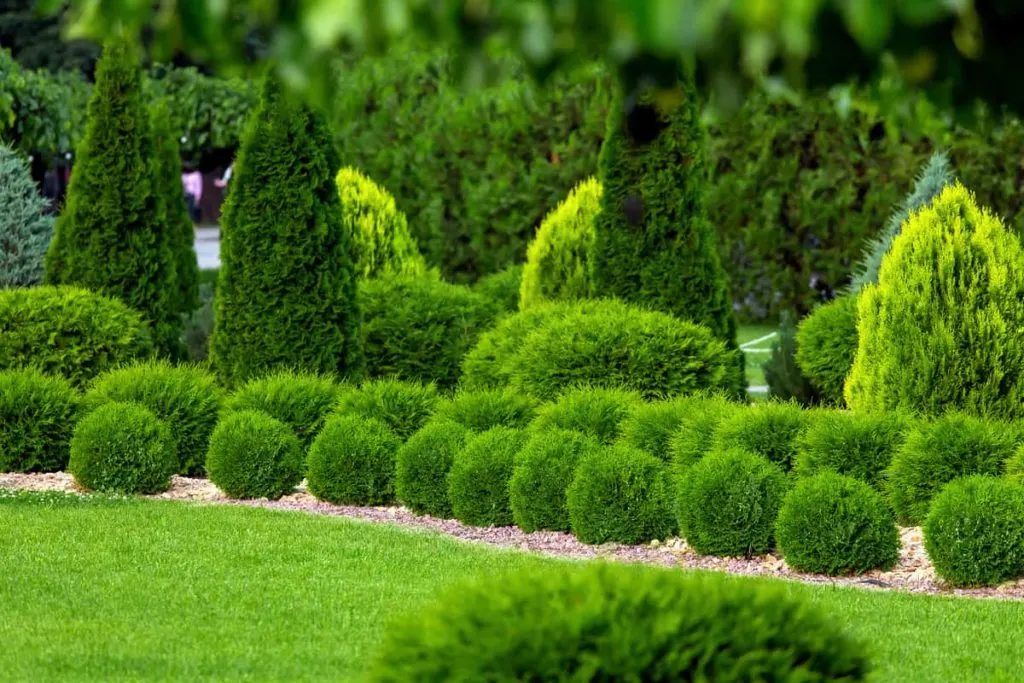
Yes, the much loved and often overused arborvitae. Planted en masse in suburbia for decades.
For those who love that boxwood look but want something evergreen (even in the north!), arborvitae can be almost as fun and inspiring. Plus, you might already have a large established hedge to prune. Play with it to make it a specimen in its own right!
Quick tip: *Don’t trim too deep. Arborvitae grows green from green.
9. Yew (Taxus baccata)
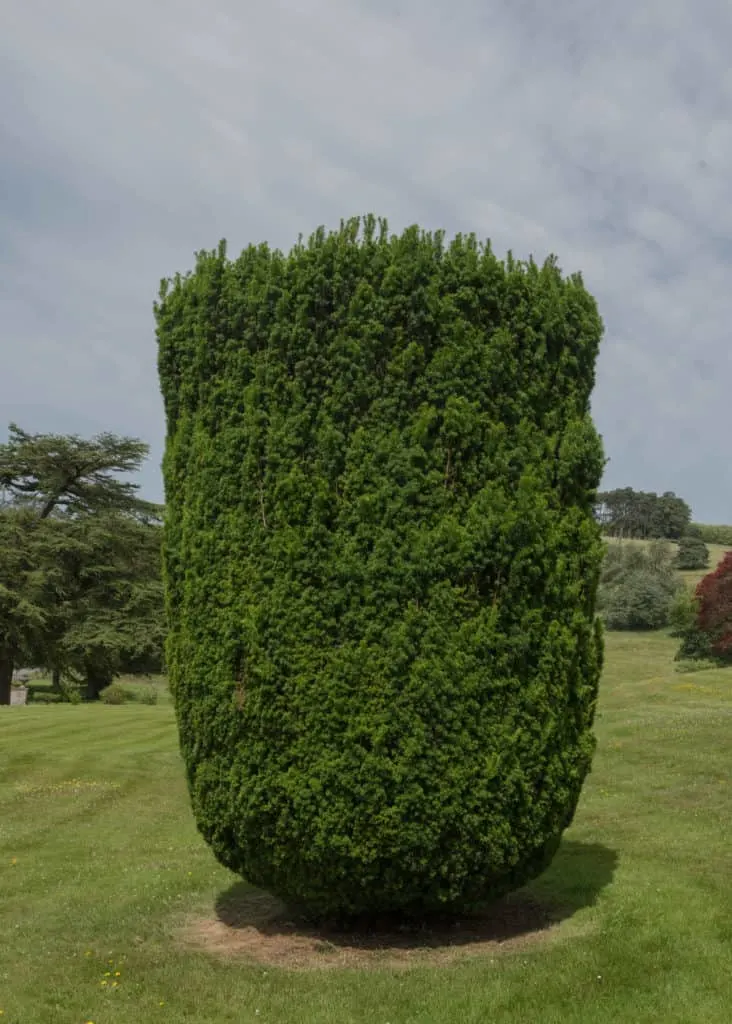
The Yew is synonymous with topiary art throughout the world. Yew makes a wonderful specimen planting as it can be shaped and pruned. It also has year-round interest with its bright red berries, and lovely evergreen needle-like foliage.
Excellent Vines to Grow as Specimens
10. Clematis (Clematis sp.)
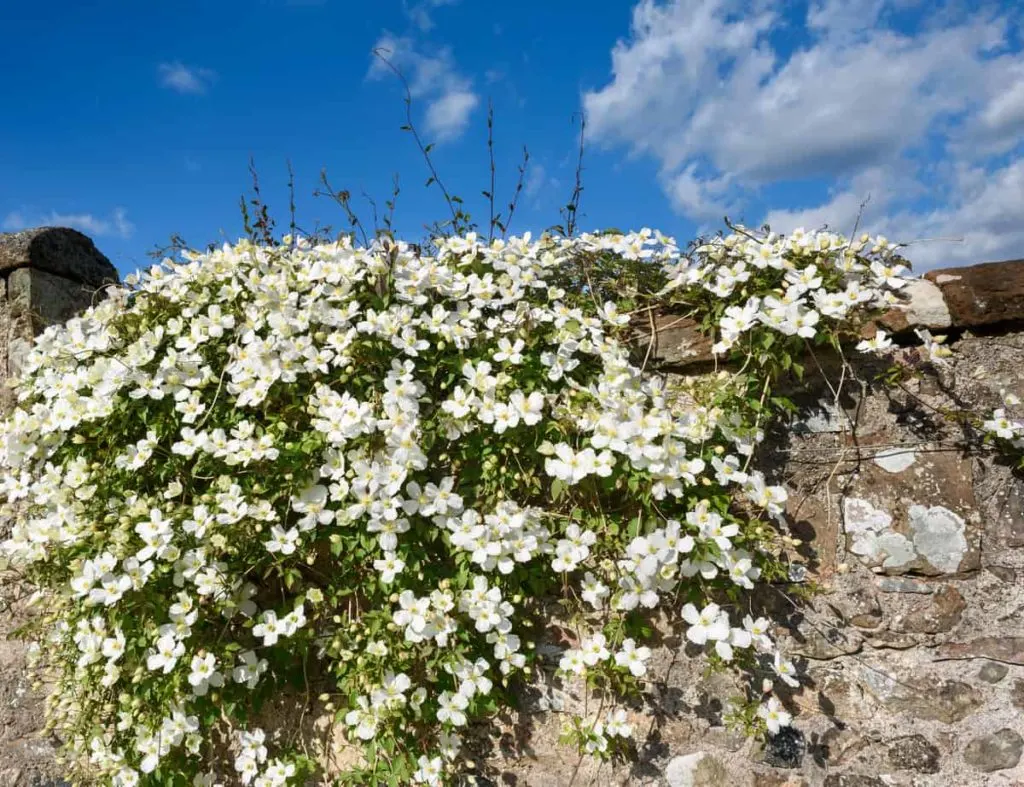
Stunning and eye catching, clematis varieties make incredible specimens.
There are three main types of the large-flowered vines, those that bloom in spring, those that bloom repeatedly, and those that bloom in summer and fall.
An addictive genus of plants, clematis scramble and climb over structures and bloom in a flamboyant array of colors.
11. Climbing Rose (Rosa)
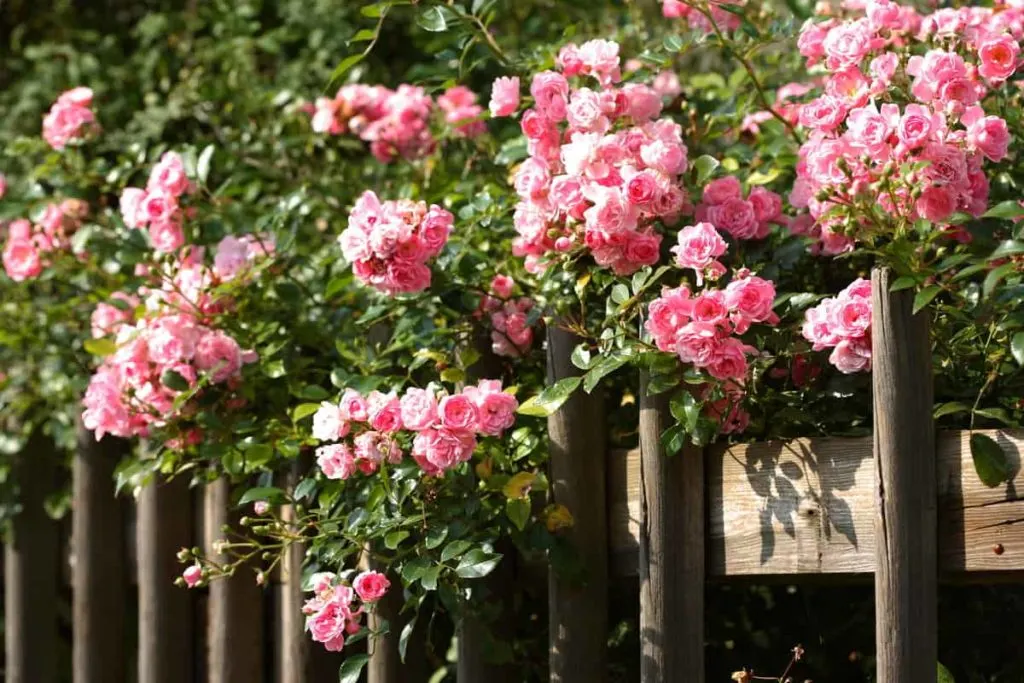
For rose enthusiasts, climbing roses bring it all to the table! The variety of climbing roses is extensive. Also, they grow to exceptional heights.
The usefulness of these spectacular climbing plants is certainly not limited to their ability to create an inspiring focal point in the garden.
12. Ivy (Hedera)
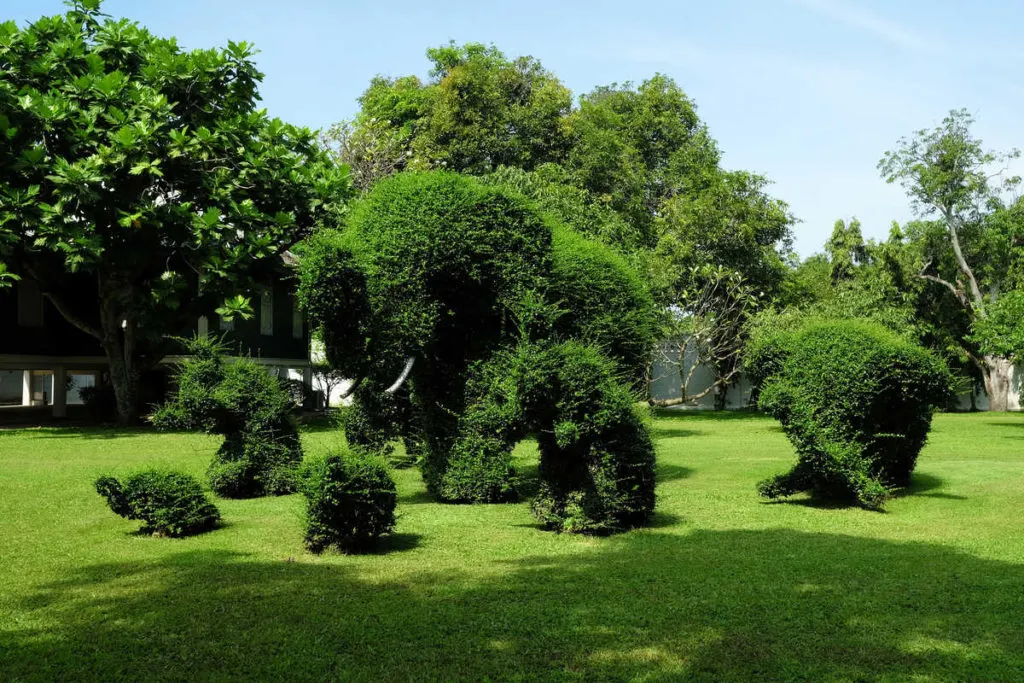
Often thought of as a background plant, or as a ground cover, growing ivy to cover interesting forms and frames allows it to be on this list of the best specimen plants.
Once established to cover the intended form, structure, or frame, ivy draws the eye. It creates a conversation piece. It also may be easier and less labor intensive to create that dramatic plant sculpture of your dreams!
Final Thoughts
Bring focus and interest to the landscape in a multitude of ways. Be the standout conversation starter in your neighborhood with a living art plant specimen.
